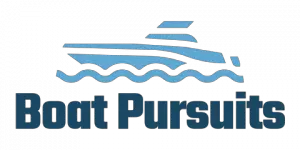Canoes have been a popular form of transportation and recreation for centuries.
From fishing to exploration, they have been used in many ways.
But do you ever wonder if you can motorize a canoe? In this article, we’ll take a look at the different types of canoes, the advantages and disadvantages of motorized canoes, what to consider when deciding if you should motorize a canoe, safety tips, and the cost and regulations associated with motorizing a canoe.
So lets dive into what you need to know about motorizing a canoe!
Short Answer
No, a canoe is not motorized.
Most canoes are propelled through the water using a paddle, but some may have a small electric motor for power.
Canoes may also have sails, or even outboard motors, but these are not common.
Generally, a canoe is powered by a single person using a paddle.
Types of Canoes
When it comes to canoes, there are two main types: motorized and non-motorized. Motorized canoes are powered by an outboard motor and are typically used for long-distance travel or fishing. These canoes usually have a flat bottom and are capable of reaching speeds of up to 10mph. Non-motorized canoes, on the other hand, are propelled by paddles and are used mainly for recreational purposes or navigating in shallow waters. They are typically pointed at the front and back with a flat bottom, making them more maneuverable than motorized canoes.
In addition to these two main types of canoes, there are also specialty canoes such as whitewater canoes, racing canoes, and even folding canoes.
Whitewater canoes are designed for navigating rough water, while racing canoes are lightweight and designed for speed.
Folding canoes are designed for portability and can be easily folded up and stored away.
No matter what type of canoe you choose, its important to consider the intended purpose of the canoe before deciding to motorize it.
Motorized canoes are great for long-distance travel, but they may not be suitable for navigating in shallow waters or for recreational purposes.
Non-motorized canoes are the perfect choice for recreational activities and navigating in shallow waters, but they may not be ideal for long-distance travel or fishing.
Advantages of Motorized Canoes

When it comes to the advantages of motorized canoes, perhaps the most obvious benefit is the ability to travel longer distances.
With a trolling motor, you can cover more ground in less time, allowing you to explore larger areas.
This is especially useful for those who enjoy fishing or hunting, as they can move to various spots without having to paddle.
In addition to being able to travel further, motorized canoes are also able to move at a much faster pace.
This feature is great for those who are looking to get to their destination quickly, such as for a race or competition.
Another advantage of motorized canoes is that they can be used in shallow waters, where paddling is often difficult or impossible.
Motorized canoes can easily maneuver over shallow waters and even cross through marshes and swamps with ease.
This makes them ideal for exploring areas that would otherwise be inaccessible.
Finally, motorized canoes are easier to use, as there is no need to paddle.
This eliminates the need for a large crew, as the canoe can be operated by just one or two people.
This makes motorized canoes a great choice for those who are looking for a more comfortable and less strenuous experience.
Advantages of Non-Motorized Canoes
Non-motorized canoes have a number of advantages over their motorized counterparts.
For starters, they are much easier to use and require much less maintenance than motorized canoes.
Not only do they not require fuel or oil, but they also don’t require regular maintenance such as oil changes or spark plug replacements.
This makes them a great choice for anyone who is looking for a canoe that is easy to use and maintain.
Non-motorized canoes are also much quieter than motorized canoes, making them ideal for navigating in areas with a lot of wildlife.
This can be especially beneficial for those who are looking to observe nature or go on a quiet fishing trip.
Furthermore, non-motorized canoes are much lighter than motorized canoes, making them easier to transport and store.
In addition, non-motorized canoes are typically much more maneuverable than motorized canoes.
This makes them ideal for navigating in tight spaces and shallow waters, where motorized canoes would be unable to go.
They can also provide a great workout, as paddling a canoe requires a good amount of physical effort.
This can be especially beneficial for those looking to stay active while out on the water.
Factors to Consider When Deciding Whether to Motorize a Canoe

When deciding whether or not to motorize a canoe, there are a few key factors to consider.
First, you should consider the intended purpose of the canoe.
If you plan to use your canoe primarily for recreational purposes, such as fishing or sightseeing, a motorized canoe may be the best choice.
However, if you plan to use your canoe for racing or whitewater paddling, a non-motorized canoe may be a better choice.
Next, you should consider the type of water youll be navigating.
If you plan to navigate in shallow waters, such as streams or rivers, a non-motorized canoe is ideal.
This is because motorized canoes are more difficult to maneuver in shallow waters, and can easily run aground.
On the other hand, if you plan to navigate in deep waters, such as lakes or oceans, a motorized canoe may be a better choice.
Motorized canoes are able to travel longer distances and can travel at a much faster pace than non-motorized canoes.
Finally, you should consider the cost of motorizing a canoe.
Motorizing a canoe can be relatively expensive, depending on the type of motor you choose.
Trolling motors are more affordable than outboard motors, but outboard motors are more powerful and can travel at higher speeds.
Additionally, youll need to consider the cost of fuel for a motorized canoe, as this can significantly add to the overall cost.
Safety Tips for Operating a Motorized Canoe
When operating a motorized canoe, safety should always be a top priority.
To ensure a safe and successful journey, make sure to take the following steps.
First, make sure that the boat is properly equipped.
Motorized canoes must have several items on board in order to be legally operated.
This includes a fire extinguisher, life jackets, a whistle, and navigation lights.
Additionally, the motor should be properly mounted and securely attached to the canoe.
Next, make sure that the motor is properly serviced and in good working condition.
The motor should be inspected for any signs of wear or damage before each use, and any necessary repairs should be made as soon as possible.
Third, make sure that the canoe is properly loaded.
The canoe should be loaded evenly on both sides, and heavy items should be placed lower in the canoe to help maintain the center of gravity.
Additionally, the canoe should not be overloaded, as this can increase the risk of tipping or capsizing.
Finally, familiarize yourself with local boating regulations.
Each state may have different laws and regulations regarding motorized canoes, so make sure to check with the local authorities before heading out on the water.
By following these simple tips, you can ensure a safe and enjoyable experience while operating a motorized canoe.
Cost of Motorizing a Canoe

When considering whether to motorize your canoe, it is important to consider the cost associated with motorizing a canoe.
Motorizing a canoe can be expensive, as it requires purchasing a motor, a battery, a propeller, and other necessary components.
Additionally, you may need to purchase an appropriate mounting system for the motor and other items.
Depending on the type of motor and the quality of the components, the cost of motorizing a canoe can range from a few hundred dollars to several thousand dollars.
In addition to the upfront cost of motorizing a canoe, you may also have to pay for ongoing maintenance and repairs.
Regular maintenance and repairs are essential for keeping your motorized canoe running safely and efficiently.
This includes checking the motor and battery regularly, replacing or repairing worn or damaged parts, and keeping the propeller clean.
Depending on the type of motor and the frequency of maintenance and repairs, the cost of motorizing a canoe can quickly add up over time.
Finally, it is important to consider the cost of fuel when motorizing a canoe.
While some canoes may use electric motors, many motorized canoes use gasoline-powered motors.
This means that you will have to pay for fuel when operating your motorized canoe, which can add to the cost of motorizing.
In short, motorizing a canoe can be a costly endeavor, and it is important to consider the upfront costs, ongoing maintenance and repair costs, and fuel costs when deciding whether or not to motorize a canoe.
Availability and Regulations on Motorized Canoes
When it comes to motorized canoes, availability and regulations vary by region.
In the United States, motorized canoes are available in most states and can be used on both public and private waterways.
However, there are certain regulations that must be followed in order to use motorized canoes.
Depending on the state, motorized canoes may need to be registered, have a valid boat license, or meet certain safety standards.
Additionally, certain waterways may have restrictions on motorized canoes, such as speed limit restrictions or age requirements.
It is important to research the regulations in your area before operating a motorized canoe.
In addition to local regulations, motorized canoes are also subject to federal regulations when used on navigable waterways.
The U.S.
Coast Guard requires that motorized canoes be equipped with a minimum of two life jackets and sound-producing devices such as whistles or horns.
Additionally, the Coast Guard also requires that motorized canoes be operated in a safe and responsible manner.
Finally, it is important to note that there may be additional regulations or restrictions on motorized canoes in certain areas, such as national parks or wildlife refuges.
Therefore, it is important to check with local authorities before operating a motorized canoe in these areas.
Final Thoughts
In conclusion, the answer to the question of whether or not a canoe is motorized depends on the type of canoe.
Motorized canoes can provide an effective way to travel long distances, while non-motorized canoes are ideal for navigating in shallow waters.
When considering whether or not to motorize a canoe, it is important to weigh the advantages and disadvantages of each type of canoe, as well as consider factors such as cost, safety, and availability.
Now that you have a better understanding of motorized and non-motorized canoes, it’s time for you to make an informed decision about what type of canoe is best for you and your needs.

